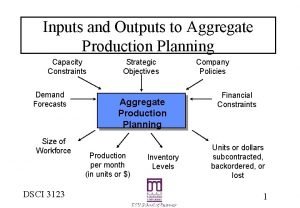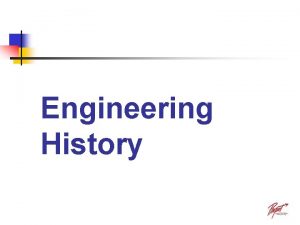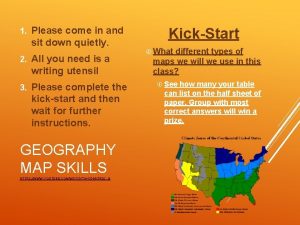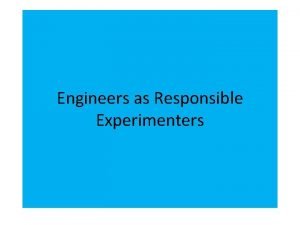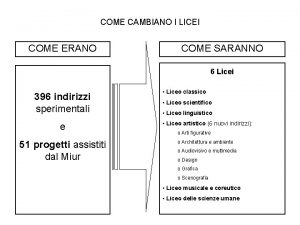Where did Engineers first come from Engineers where
























- Slides: 24

Where did “Engineers” first come from? Engineers where people who “ran” engines and engines came from being ingenious

Ingenious Engine ► Some of the earliest ingenious inventions where war machines, such as this Mangonel. ► This lead to ingenious becoming engine and the war engine.

What is an Engineer? (from the dictionary) a person who designs, constructs, and uses engines or machines. 2. a person who manages an engine or locomotive 3. Also someone who creates solutions to problems 1.


1. Water Compartment 2. Coal Bunker 3. Worm Coal Conveyor 4. Reverse Lever (Johnson Bar) 5. Stoker 6. Throttle Lever 7. Water Gauge 8. Firebox 9. Crown Sheet 10. Safety Valve 11. Turbine-Generator 12. Boiler Water 13. Steam Dome 14. Throttle Valve 15. Boiler Tubes 16. Dry Pipe 17. Water Delivery Check Valve 18. Sand Dome 19. Flue Tubes 20. Superheater Tubes 21. Smokebox 22. Blast Pipe 23. Steam Chest 24. Cylinder 25. Piston 26. Crosshead 27. Main Rod 28. Side Rod 29. Sand Pipe 30. Ashpan Hopper 31. Brick Arch 32. Grate 33. Injector

For the first time, machinery started to become complex in its nature and needing specialized skills to operate. No longer could “anyone” run these machines.

Steam Timeline A few of the Highlights 100 A. D. Hero's Engine is Created 1606 Giovanni Battista Della Porta uses steam to make water rise through a column 1690 Denys Papin discovers a way to produce a vacuum using steam but does not pursue the knowledge 1698 Thomas Savery combines the force of steam with the pressure of the atmosphere and patents the first atmospheric engine 1712 Thomas Newcomen produces a self acting atmospheric engine 1769 James Watt is granted a patent for the Separate Condenser Hero’s Steam engine

1780 James Pickard and Matthew Wasborough create an engine with rotary motion by fitting a crank, rod and flywheel to Newcomer's Model 1783 A double acting engine is introduced by Watt - Steam pushes on each side of the piston alternately as opposed to just one side 1786 Boulton and Watt produce a double acting rotative engine 1802 A steam railway locomotive is built at Coalbrookdale, Shropshire Newcomer’s Steam engine

Steam Timeline A few of the Highlights 1802 A stern wheel steam paddle tug is created by William Symington 1807 Robert Fulton's ship the "Clermont" becomes the first steamship to provide regular passenger service in America 1825 The First Public Railway to use steam locomotives opens 1827 The era of locomotive success begins in Britain 1838 The Great Western Railway opens 1844 The "Lancashire" boiler is introduced in Manchester by William Fairbairn 1846 The Regulation of Railways (Gauge) Act is passed The "Tank Engine" is born 1850 Randolph Elder fits the first marine compound engine

1865 Commuter Traffic becomes prominent in large cities - Passenger traffic locomotives are introduced by the railways 1878 Willans patents the high speed fully enclosed "inverted vertical" engine 1890 Charles Pain patents the forced-lubrication-high-speed-enclosed engine 1898 The first British express locomotive travels on the Great Northern Railway 1906 Superheating of steam is invented by Dokter Schmidt and used in British Railway locomotives 1938 The streamlined "Pacific" 4 -6 -2 locomotive "Mallard" reaches a speed of 126 miles per hour (201 kph), This speed still stands as a world record. 1960 The final steam locomotive is built by British Railways - "Evening Star"

Steam engines where used for heavy machinery

Most steam engines where so large they had to be transported by rail or over water on barges

Eventually someone realized you could run a steam engine over land the first tractors were built

20 HP Oil City Steam Engine 14 x 17 x 19”

Stanley Steamer Automobile 1897 -1924 Invented by the Stanley Brothers from Maine and manufactured in Massachusetts The world’s most popular automobile until about 1908.

Every engineering discipline eventually leads to combining different technologies to improve the design

Why engineers were important: ► Cost: § Steam engines represented a huge investment that needed to be protected (by taking good care of it) § By protecting people who relied on the engines (try getting stuck in the middle of the ocean with a broken steam engine. Ready to make a call?

Why engineers are important ► Their job is to look at ► They are often how something is done innovators (inventors) or how something ► They find ways of should work and make improving the way it happen using things work principles of ► They are given engineering and challenges to science and overcome mathematics.

Safety: ► Safety: § Steam engines are operated by super heated water § Water boils at 212 degrees F (100 degrees C) but engines keep their water around 350 -400 degrees § If the boiler fails, all the super heated water immediately turns to steam § 1 gallon liquid water = 2000 gallons of steam!

NYC Steam Explosion July 2007

Other types of engineers: ► Chemical ► Aeronautical ► Biomedical ► Food ► Civil ► Communications ► Mechanical ► Systems ► Electrical ► Process ► Computer ► Agricultural ► Aerospace

What do engineers do? ► Engineers create solutions to solve problems ► They identify the problems ► They incorporate new technologies ► They develop plans for making new products/technologies ► They refine what already exists BUILD PROBLEMS DEVELOP IMPLEMENT SOLUTIONS IDENTIFY SOLUTIONS

Engineering today ► 1, 600, 000 engineers in the United States ► 5, 000 engineers in Maine ► Engineers are usually very happy in what they do because they get a chance to work on projects that are creative and help people by making something work better or safer.

 Come rico come sano
Come rico come sano First come first serve
First come first serve First come first serve calculator
First come first serve calculator What did geological engineers invent
What did geological engineers invent When did engineering emerge
When did engineering emerge Come holy spirit dove divine
Come holy spirit dove divine Hey come on out ending
Hey come on out ending Come thou fount come thou king lyrics
Come thou fount come thou king lyrics Have has
Have has E m m a n u e l
E m m a n u e l Come mi chiamo?
Come mi chiamo? Come lord jesus come and be born in our hearts lyrics
Come lord jesus come and be born in our hearts lyrics Come home come home jesus is calling
Come home come home jesus is calling Vorrei essere al mare
Vorrei essere al mare Come on come on turn your radio on
Come on come on turn your radio on Come mi chiamo come mi chiamo
Come mi chiamo come mi chiamo Past participle de beber
Past participle de beber Come in come in and sit down
Come in come in and sit down Come in come in and sit down
Come in come in and sit down Where did garlic come from in the columbian exchange
Where did garlic come from in the columbian exchange Where did pencil come from
Where did pencil come from Who were the vikings and where did they come from
Who were the vikings and where did they come from Where do the celts come from
Where do the celts come from Where did hiv come from
Where did hiv come from What race were the anglo saxons
What race were the anglo saxons

